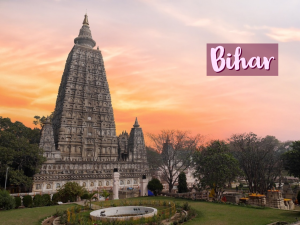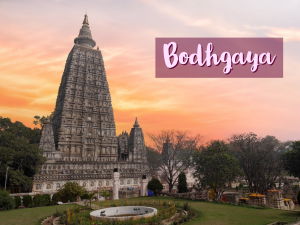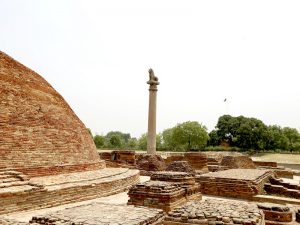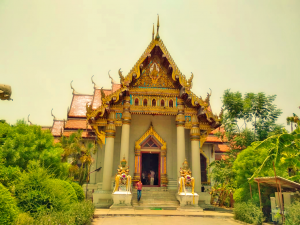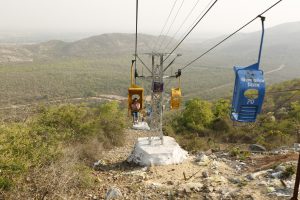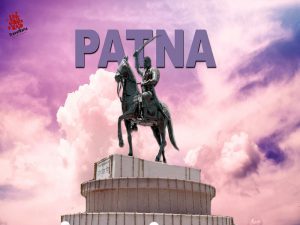20+ Best Places to See in Bihar – A Complete Travel Guide
Bihar, the land where ancient empires rose and fell, is one of India’s most historically and culturally significant states. From being the cradle of Buddhism and Jainism to nurturing great scholars like Chanakya and Aryabhata, Bihar has always been a hub of knowledge and spirituality. With magnificent ruins, sacred temples, majestic forts, and vibrant festivals, the state offers a unique blend of experiences.
If you are planning your next trip, here’s a detailed guide to the top places to see in Bihar that will make your journey unforgettable.
1. Bodh Gaya
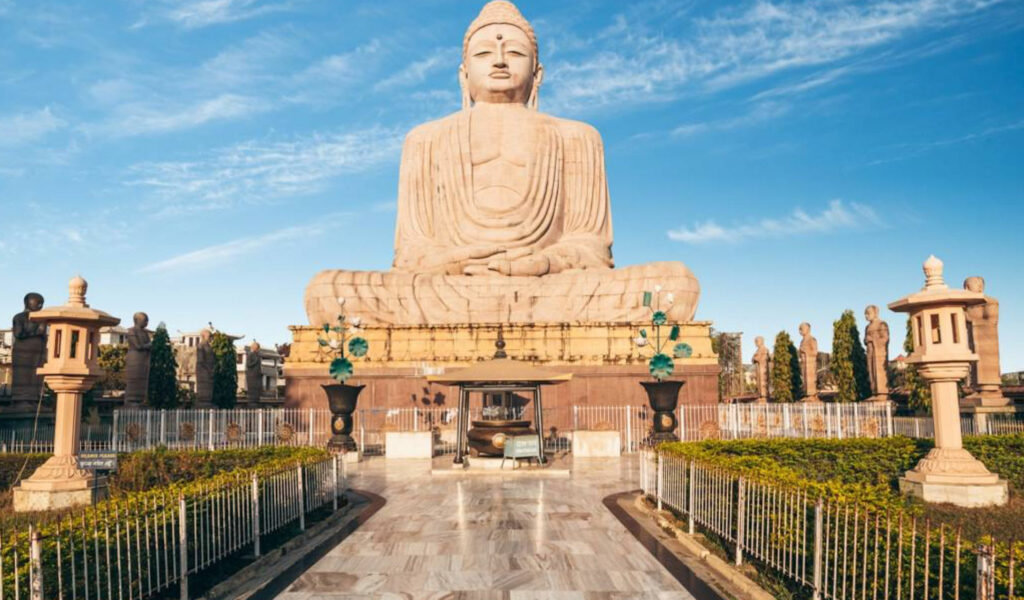
Bodh Gaya is the most famous Buddhist pilgrimage site in the world and undoubtedly one of the top places to see in Bihar. It is here, under the sacred Bodhi Tree, that Prince Siddhartha attained enlightenment and became Gautama Buddha more than 2,500 years ago. This makes Bodh Gaya not just a tourist destination but a deeply spiritual journey for millions of people from across the globe.
The centerpiece of Bodh Gaya is the Mahabodhi Temple, a UNESCO World Heritage Site. The temple’s towering spire, ancient carvings, and tranquil surroundings attract pilgrims and history lovers alike. The Bodhi Tree beside the temple, said to be a direct descendant of the original, remains a symbol of wisdom and peace.
Bodh Gaya is also home to numerous monasteries built by Buddhist communities from Thailand, Japan, Bhutan, and Sri Lanka, each reflecting unique architectural styles. Visitors can explore the Thai Monastery, Tibetan Monastery, Japanese Temple, and the Great Buddha Statue, which stands 80 feet tall.
Beyond religious significance, Bodh Gaya offers opportunities for meditation, yoga, and spiritual retreats. Many centers provide short and long meditation courses, making it ideal for those seeking inner peace.
👉 Travel Tip: The best time to visit Bodh Gaya is between October and March, when the weather is pleasant. If possible, plan your visit in January to witness the Kalachakra Festival, attended by thousands of monks and the Dalai Lama.
Major Places to See in Bodh Gaya:
•Mahabodhi Temple (UNESCO site)
•Bodhi Tree
•Great Buddha Statue
•Thai Monastery
•Tibetan Monastery
•Japanese Temple
•Archaeological Museum
2. Nalanda
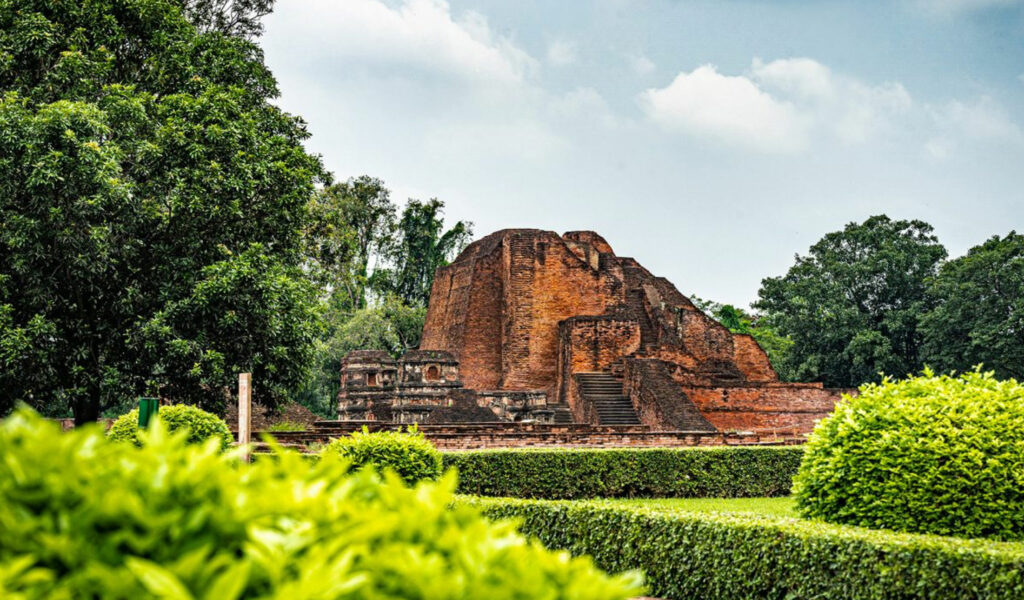
When it comes to historic places to see in Bihar, Nalanda stands unmatched. Once the greatest center of learning in the world, Nalanda University flourished from the 5th to the 12th century CE and attracted scholars from as far as Tibet, China, Korea, and Central Asia.
Spread over 14 hectares, the ruins of Nalanda University include monasteries, lecture halls, libraries, temples, and beautifully carved sculptures. The grandeur of the brick-built structures speaks of India’s intellectual dominance during ancient times. Nalanda was home to over 10,000 students and 2,000 teachers at its peak, covering subjects like medicine, astronomy, philosophy, and mathematics.
The Nalanda Archaeological Museum houses artifacts, coins, statues of Buddha, and ancient manuscripts that provide a deeper understanding of the site. Another must-visit is the Hieun Tsang Memorial Hall, dedicated to the Chinese scholar who documented his time at Nalanda.
Today, Nalanda is not just a heritage site but a symbol of India’s glorious academic history. A new Nalanda University, revived in 2014, now continues the legacy of knowledge near the ruins.
👉 Travel Tip: The best time to visit Nalanda is between November and February. A day trip from Patna or Rajgir makes it convenient for travelers. Hiring a local guide helps bring the ruins alive with fascinating stories.
Major Places to See in Nalanda:
•Nalanda University Ruins
•Nalanda Archaeological Museum
•Hieun Tsang Memorial Hall
•Surya Mandir (Sun Temple)
•Nava Nalanda Mahavihara
3. Rajgir
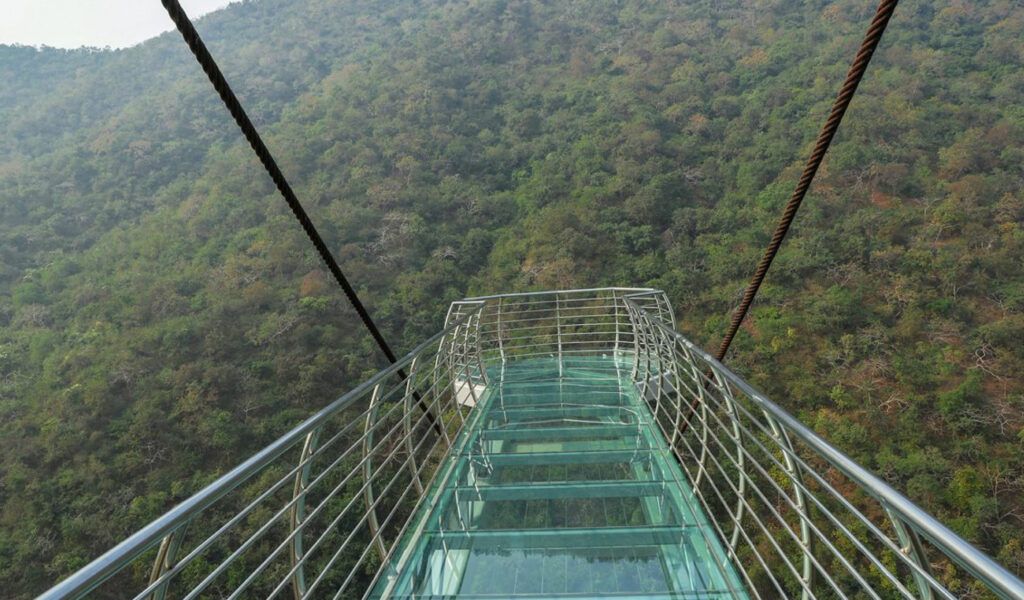
Surrounded by lush hills and hot springs, Rajgir is one of the most scenic and spiritually significant places to see in Bihar. It was once the capital of the mighty Magadh kingdom before Patliputra (modern Patna) took over. Both Lord Buddha and Lord Mahavira spent time in Rajgir, making it sacred for Buddhists and Jains.
The most popular attraction here is the Vishwa Shanti Stupa (Peace Pagoda), perched atop Ratnagiri Hill. A ropeway ride takes you to the stupa, offering panoramic views of the valley. Other Buddhist sites include Griddhakuta Hill (Vulture’s Peak), where Buddha delivered many sermons, and several monasteries.
Rajgir is also famous for its hot springs, believed to have medicinal properties. For Jains, Rajgir is home to several important temples spread across the hills. The Ajatshatru Fort, dating back to 6th century BCE, adds to Rajgir’s historical charm.
For adventure lovers, Rajgir offers trekking, nature walks, and even wildlife experiences at the Rajgir Wildlife Sanctuary.
👉 Travel Tip: Visit Rajgir between October and March for pleasant weather. Don’t miss the ropeway ride to the Shanti Stupa and carry comfortable shoes for exploring the hilly terrain.
Major Places to See in Rajgir:
•Vishwa Shanti Stupa (Peace Pagoda)
•Griddhakuta Hill (Vulture’s Peak)
•Hot Springs
•Ajatshatru Fort
•Cyclopean Walls
•Rajgir Wildlife Sanctuary
•Japanese Temple
4. Vaishali
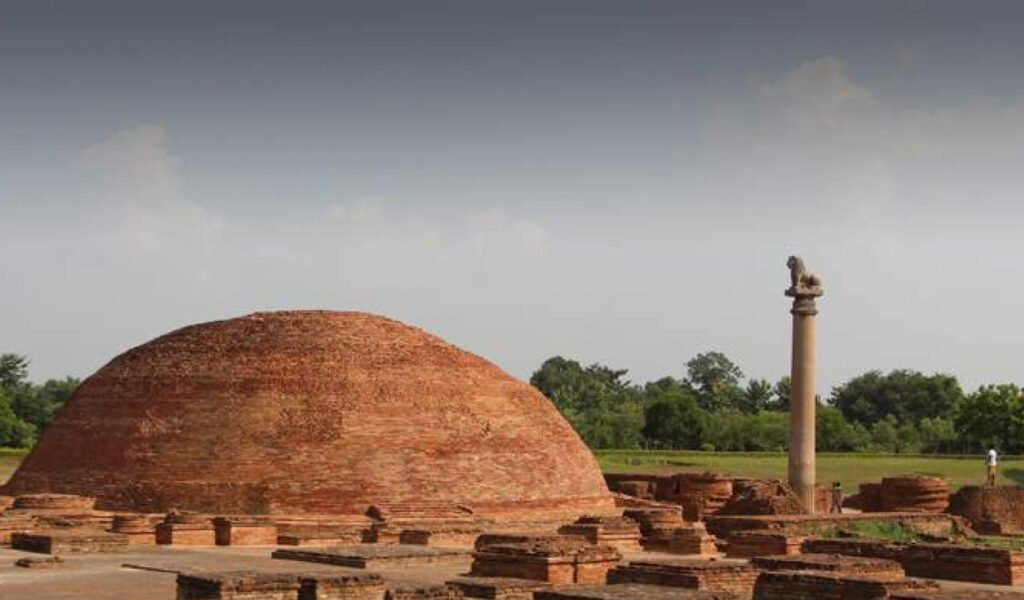
Vaishali is one of the most historically significant places to see in Bihar, known as the birthplace of Lord Mahavira, the 24th Tirthankara of Jainism. It also holds importance in Buddhism since Lord Buddha delivered his last sermon here before attaining Mahaparinirvana.
Dating back to the 6th century BCE, Vaishali is considered the world’s first republic, where a democratic system of governance existed long before modern times. The city was a thriving trade hub and cultural center in ancient India.
Among the key attractions is the Ashokan Pillar, erected by Emperor Ashoka in the 3rd century BCE. It is crowned with a magnificent lion capital and stands as a symbol of Buddhist heritage. The Buddha Stupa I & II, containing sacred relics of Lord Buddha, attract thousands of pilgrims every year. Another must-visit is the Abhishek Pushkarini, or the coronation tank, where Vaishali’s rulers were once anointed.
For Jain pilgrims, the Vishwa Shanti Stupa and Jain temples in Vaishali hold deep spiritual importance. The city is also mentioned in the Ramayana as the birthplace of Princess Sita, making it sacred for Hindus as well.
👉 Travel Tip: The best time to visit Vaishali is during winter (November–February). Don’t forget to combine your visit with nearby attractions like Kesaria Stupa and Patna.
Major Places to See in Vaishali:
•Ashokan Pillar
•Buddha Stupa I & II
•Abhishek Pushkarini (Coronation Tank)
•Vishwa Shanti Stupa
•Kundalpur (associated with Lord Mahavira)
5. Patna
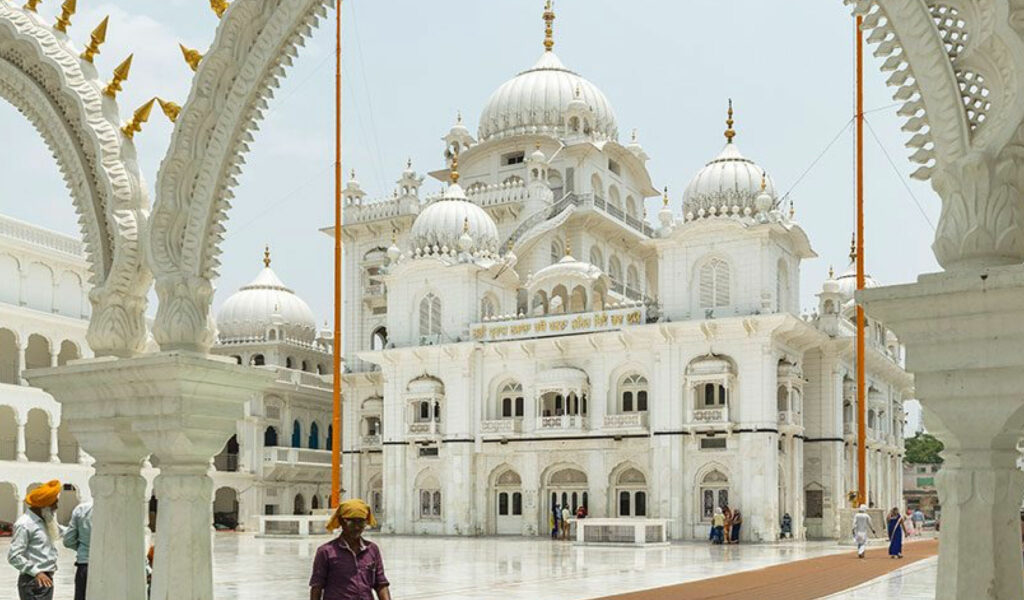
Patna, the capital of Bihar, is one of the world’s oldest continuously inhabited cities. Known in ancient times as Pataliputra, it was the seat of powerful empires like the Maurya and Gupta dynasties. Today, Patna is a bustling metropolis that combines history, spirituality, and modern vibrancy, making it one of the most important places to see in Bihar.
One of the city’s highlights is the Takht Sri Patna Sahib Gurudwara, also known as Harmandir Sahib, the birthplace of Guru Gobind Singh, the 10th Sikh Guru. It is one of the five holiest Takhts in Sikhism and draws pilgrims from across the globe.
For history buffs, the Patna Museum and the newer Bihar Museum are must-visits. They house priceless collections, including Mauryan sculptures, Buddhist relics, and paintings. The Golghar, a massive granary built by the British in 1786, offers panoramic views of the city and the Ganga River.
Patna also has deep religious significance for Hindus, with temples like the Mahavir Mandir near the railway station, which sees thousands of devotees daily. The Padri Ki Haveli, the oldest church in Bihar, and the Agam Kuan (Unfathomable Well), dating back to Ashoka’s era, add layers of diversity to the city’s attractions.
For families and modern explorers, Eco Park, Sanjay Gandhi Biological Park (Patna Zoo), and vibrant local bazaars provide enjoyable experiences. Foodies should not miss Bihar’s iconic dishes like litti-chokha, khaja, and sattu drinks at Patna’s roadside stalls and restaurants.
👉 Travel Tip: The best time to visit Patna is between October and March. Plan your trip around Guru Gobind Singh Jayanti if you want to experience grand celebrations at Patna Sahib Gurudwara.
•Takht Sri Patna Sahib Gurudwara
•Golghar
•Patna Museum
•Bihar Museum
•Mahavir Mandir
•Padri Ki Haveli
•Agam Kuan
•Eco Park
•Sanjay Gandhi Biological Park
6. Vikramshila
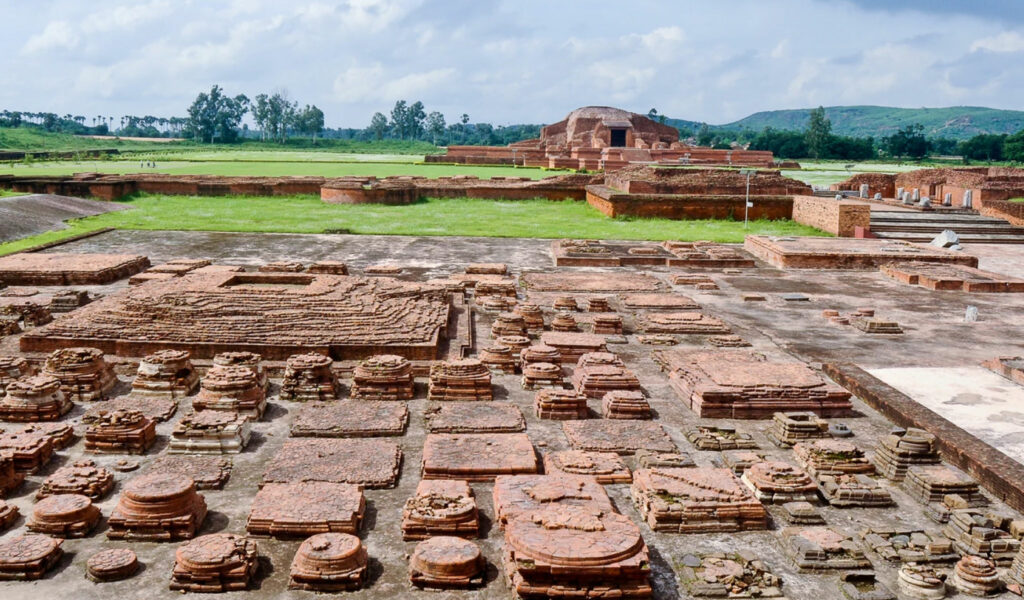
Alongside Nalanda, Vikramshila University was one of the most important centers of learning in ancient India. Founded in the late 8th century CE by King Dharmapala of the Pala dynasty, Vikramshila specialized in Tantric Buddhism and became a renowned hub for higher education, attracting scholars from across Asia. At its peak, the university housed more than 100 teachers and around 1,000 students.
The ruins of Vikramshila, located near Bhagalpur in Bihar, give a fascinating glimpse into India’s scholarly past. Spread across a large area, the excavation site features a massive monastery complex with 208 cells, arranged around a central courtyard. The main stupa, built in brick, still stands tall and is believed to have enshrined sacred relics of the Buddha.
Visitors can also explore several smaller stupas, temples, and lecture halls within the ruins. The precision in brickwork and layout shows the architectural brilliance of the Pala period. The site is often less crowded compared to Nalanda, making it an excellent destination for travelers seeking a quiet exploration of history.
The Vikramshila Museum at Antichak, nearby, preserves artifacts, sculptures, terracotta plaques, and coins excavated from the site. Together, the ruins and museum paint a vivid picture of the university’s intellectual and cultural richness.
For travelers, Vikramshila is not just about history—it also offers scenic beauty. Located on the banks of the Ganga, the surroundings are peaceful and picturesque, perfect for combining heritage with nature.
👉 Travel Tip: The best time to visit Vikramshila is between November and March. Carry a hat or umbrella, as the site is open and can get hot during the day. Hiring a local guide enhances the experience by bringing the ruins alive with stories from the Pala era.
Major Places to See in Vikramshila:
•Vikramshila University Ruins
•Main Stupa
•Monastery Complex (208 cells)
•Lecture Halls and Temples
•Smaller Stupas and Shrines
•Vikramshila Museum (Antichak)
•Nearby Ganga riverbanks for scenic views
7. Pawapuri
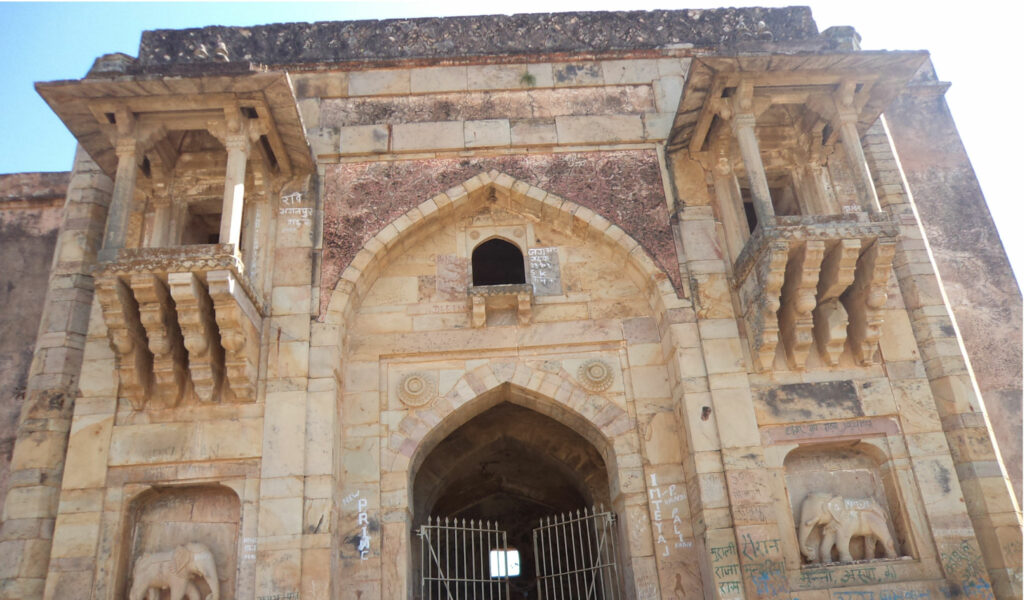
Pawapuri, located near Nalanda, is one of the holiest places to see in Bihar, especially for followers of Jainism. This sacred site is believed to be the place where Lord Mahavira, the 24th Tirthankara of Jainism, attained Nirvana (final liberation) around 527 BCE. After his cremation, it is said that the demand for his ashes was so great that the land where his body was buried turned into a pond.
The most iconic monument here is the Jal Mandir, a stunning white marble temple built in the middle of a lotus-filled lake. Visitors can reach the temple by walking along a long marble causeway. Its calm surroundings and divine aura make it one of the most peaceful pilgrimage spots in India.
Another important temple is the Gaon Mandir, marking the site of Lord Mahavira’s cremation. Pilgrims also visit the Samosharan Temple, built to depict the divine preaching hall of Mahavira.
Pawapuri is not just about religion—it is also a place where tranquility and nature blend beautifully. The reflection of the Jal Mandir on the lake during sunrise and sunset is mesmerizing, attracting photographers and spiritual seekers alike.
👉 Travel Tip: The best time to visit Pawapuri is from October to March. Early morning visits to Jal Mandir provide a serene and undisturbed experience.
Major Places to See in Pawapuri:
•Jal Mandir (Lotus Temple)
•Gaon Mandir
•Samosharan Temple
•Lotus-filled Lake surroundings
8. Rohtasgarh Fort

Situated in Rohtas district, Rohtasgarh Fort is one of the most majestic medieval forts in India and an underrated place to see in Bihar. Built around the 7th century, it gained prominence during Sher Shah Suri’s reign in the 16th century. The fort sits on a plateau, surrounded by thick forests and hilly terrain, which made it a naturally strong defense site.
Spread over 4,000 acres, the fort has more than 80 gateways, palaces, temples, mosques, and reservoirs. Although much of it lies in ruins today, its sheer scale and architectural remains still inspire awe. The Hathiya Pol (Elephant Gate) is one of the most striking entrances, adorned with beautiful carvings. Inside the fort, visitors can explore the Rohtasan Temple, Ganesh Temple, and remains of Mughal structures like palaces and tombs.
For adventurers, reaching Rohtasgarh Fort is an experience in itself. It requires a trek of about 7–8 km through rocky terrain, making it ideal for history buffs and trekking enthusiasts.
👉 Travel Tip: Carry water and snacks for the trek, as facilities are limited. It’s best explored with a guide who can narrate its fascinating history.
Major Places to See in Rohtasgarh Fort:
•Hathiya Pol (Elephant Gate)
•Rohtasan Temple
•Ganesh Temple
•Remains of Mughal Palaces & Tombs
•Stepwells and reservoirs
9. Kesaria Stupa

Located in East Champaran district, Kesaria Stupa is the tallest and one of the largest Buddhist stupas in India. Standing at about 104 feet, it is believed to have been built during the Mauryan Empire under Emperor Ashoka and later expanded in the Gupta period.
The stupa is historically significant as it marks the spot where Buddha gave his last sermon before attaining Nirvana. The massive structure, once even taller than today, has several terraces with niches that once held statues of Lord Buddha. Though many statues are missing, a few still remain, showcasing classic Gupta-style craftsmanship.
Kesaria Stupa is not as well-known as Bodh Gaya or Nalanda, but its grandeur and historical importance make it one of the most fascinating places to see in Bihar. Archaeological excavations around the site have revealed seals, coins, and artifacts from different periods, proving its importance as a center of Buddhist learning and pilgrimage.
The surrounding area, with its rural charm and scenic fields, adds to the beauty of the site. Photographers and history lovers find this place especially rewarding.
👉 Travel Tip: Best visited at sunrise or sunset for stunning views. Carry a hat and water, as the area can get quite hot during the day.
Major Places to See in Kesaria:
•Kesaria Stupa (Main Structure)
•Excavated Buddha Statues
•Nearby villages with local charm
10. Madhubani
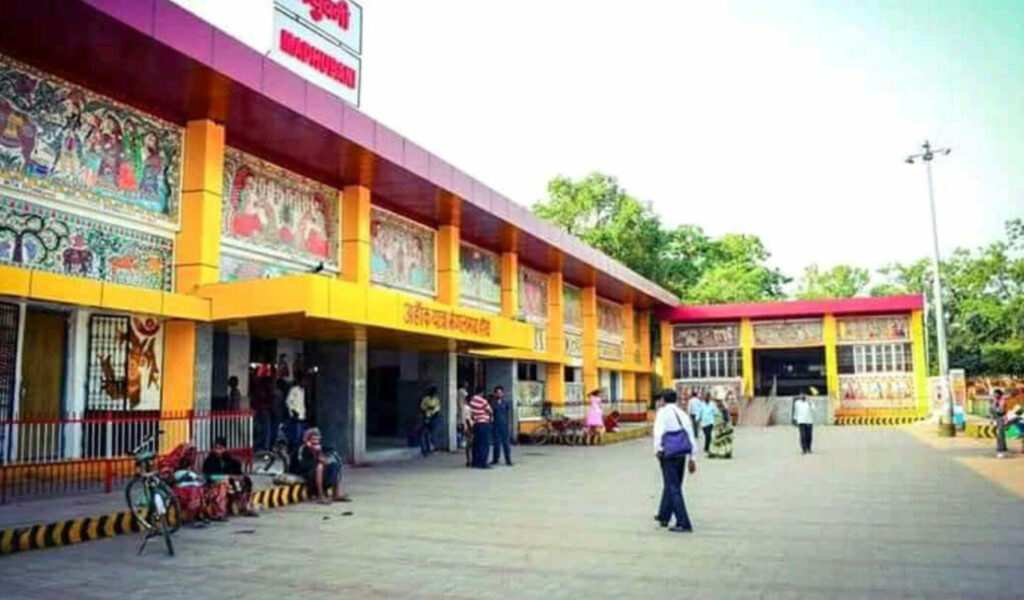
Madhubani, located in the northern part of Bihar, is globally renowned for its Madhubani paintings, also known as Mithila art. This ancient folk art form, traditionally created by women on walls and floors during festivals, has now gained international recognition on canvases, paper, and textiles.
The region is not just about art but also a center of culture, music, and traditions. Villages like Ranti, Jitwarpur, and Rashidpur are hubs of Mithila artists, where travelers can watch live demonstrations of Madhubani painting and even buy authentic artworks directly from artisans. These vibrant paintings, often depicting mythology, nature, and daily life, use natural colors and bold geometrical patterns.
Madhubani also has temples and cultural sites that reflect its strong Mithila heritage. The Kapileshwar Sthan Temple, Ugna Dham Temple, and Saurath Sabha Gachhi are important cultural landmarks.
For travelers looking to go beyond sightseeing, Madhubani offers the chance to connect with rural artisans, learn painting techniques, and immerse in Mithila culture. Festivals like Chhath Puja, Holi, and Sama-Chakeva are celebrated with unmatched enthusiasm here.
👉 Travel Tip: Visit during local festivals to experience the cultural vibrancy. Don’t forget to buy authentic Madhubani art from artists’ homes—it supports the community directly.
Major Places to See in Madhubani:
•Villages of Ranti, Jitwarpur, and Rashidpur (art hubs)
•Kapileshwar Sthan Temple
•Ugna Dham Temple
•Saurath Sabha Gachhi
•Mithila Folk Art Centers
11. Barabar Caves
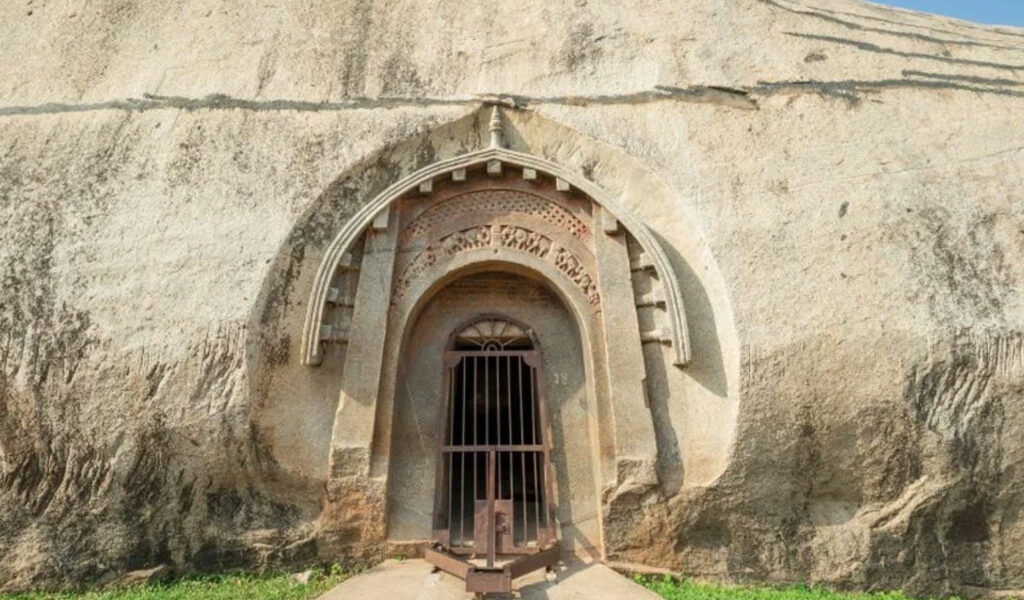
The Barabar Caves, located in Jehanabad district, are the oldest surviving rock-cut caves in India, dating back to the Mauryan Empire in the 3rd century BCE. These caves were originally excavated during Emperor Ashoka’s reign and dedicated to the Ajivika sect, a now-extinct religious order.
Carved entirely out of granite, the caves are remarkable for their highly polished interiors, which still shine even after 2,000 years. The echo effect inside the caves fascinates visitors and shows the exceptional craftsmanship of ancient artisans.
The most famous caves here are Karan Chaupar, Sudama, Lomas Rishi, and Visvakarma, each with inscriptions and unique architectural features. The Lomas Rishi Cave is particularly notable for its arched entrance, which later influenced Buddhist cave architecture across India.
The Barabar Caves are also associated with literature and pop culture. E.M. Forster’s novel A Passage to India was inspired by these caves, and parts of the 1984 movie adaptation were filmed here.
👉 Travel Tip: Visit in winter (November–February) for pleasant weather. Carry a flashlight as some caves are dark inside.
Major Places to See in Barabar Caves:
•Lomas Rishi Cave
•Sudama Cave
•Karan Chaupar Cave
•Visvakarma Cave
•Nagarjuni Caves (nearby)
12. Gaya
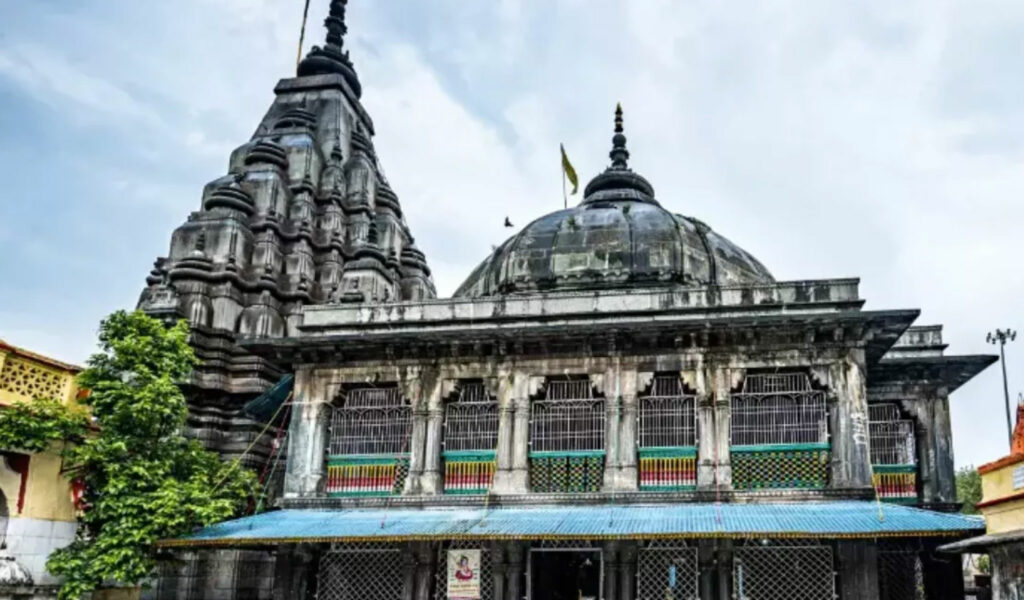
Gaya is one of the most important places to see in Bihar for Hindu pilgrims. It is renowned for the Vishnupad Temple, built on the banks of the Phalgu River, where Lord Vishnu is believed to have left his footprint. Hindus from across the country visit Gaya to perform Pind Daan, a ritual offering for the salvation of ancestors’ souls.
The city is also associated with the Ramayana, as it is believed that Lord Rama and Sita visited Gaya to perform rituals for Dasharatha, his father. The temple town comes alive during Pitrapaksha Mela, which attracts thousands of devotees every year.
Beyond its Hindu significance, Gaya is close to Bodh Gaya, making it an important stop for Buddhist pilgrims as well. Visitors can also explore Mangla Gauri Temple, Pretshila Hill, Akshayavat Tree, and Deo Sun Temple.
Gaya’s bustling bazaars, full of sweets, handicrafts, and souvenirs, add to the travel experience.
👉 Travel Tip: The best time to visit is during Pitrapaksha (Sept–Oct), but book accommodations in advance as the city gets crowded.
Major Places to See in Gaya:
•Vishnupad Temple
•Phalgu River Ghats
•Mangla Gauri Temple
•Pretshila Hill
•Akshayavat Tree
•Deo Sun Temple (nearby)
13. Sasaram

Sasaram, located in Rohtas district, is a city steeped in history and one of the underrated places to see in Bihar. It is best known as the hometown and final resting place of Sher Shah Suri, the Afghan ruler who built the Grand Trunk Road, one of Asia’s oldest highways.
The Mausoleum of Sher Shah Suri, built in the 16th century, is an architectural masterpiece. Surrounded by an artificial lake, this red sandstone tomb reflects Indo-Islamic architecture and resembles the Humayun’s Tomb in Delhi. Nearby, the Tomb of Hasan Khan Suri (Sher Shah’s father) and Tomb of Salim Shah Suri (his son) are also worth visiting.
Sasaram also houses the Rohtasgarh Fort nearby, making it a double treat for history lovers. The city is dotted with ancient mosques, temples, and waterfalls, such as Manjhar Kund and Dhua Kund, which are scenic spots for nature lovers.
👉 Travel Tip: Visit early morning for the best photographs of Sher Shah’s tomb reflected in the lake.
Major Places to See in Sasaram:
•Mausoleum of Sher Shah Suri
•Tomb of Hasan Khan Suri
•Tomb of Salim Shah Suri
•Manjhar Kund & Dhua Kund Waterfalls
•Rohtasgarh Fort (nearby)
14. Bhagalpur
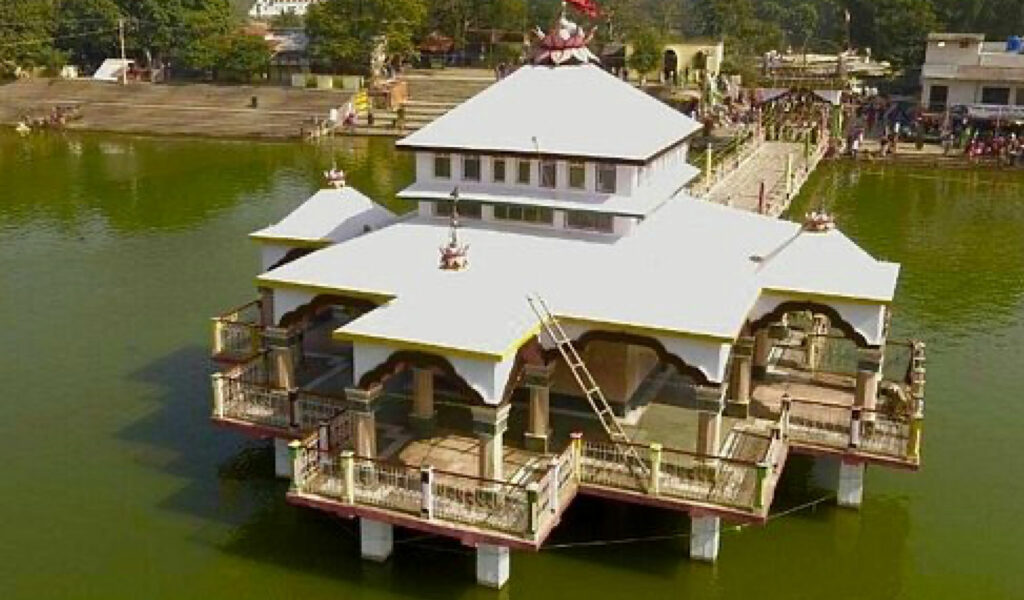
Bhagalpur, located on the banks of the Ganga River, is famously known as the Silk City of Bihar. It is renowned for its centuries-old tradition of producing Tussar silk, which is highly sought after in India and abroad. Shopping for handwoven Bhagalpuri silk sarees is one of the highlights of visiting this city.
Bhagalpur also has historical and cultural importance. It is home to the ancient Vikramshila University, one of the most important Buddhist learning centers of its time. The ruins and museum here are a must-visit for history enthusiasts.
For nature lovers, the Kahalgaon Vikramshila Gangetic Dolphin Sanctuary, India’s first dolphin sanctuary, offers a chance to spot the endangered Gangetic dolphins in their natural habitat. The serene riverbanks, old temples, and colonial-era buildings add to the city’s charm.
👉 Travel Tip: Winter is the best time to visit. Don’t miss buying authentic Tussar silk sarees and stoles from local weavers.
Major Places to See in Bhagalpur:
•Vikramshila University Ruins
•Vikramshila Gangetic Dolphin Sanctuary
•Colganj Rock-Cut Temples
•Ajgaibinath Temple
•Local Silk Weaving Centers
15. Darbhanga
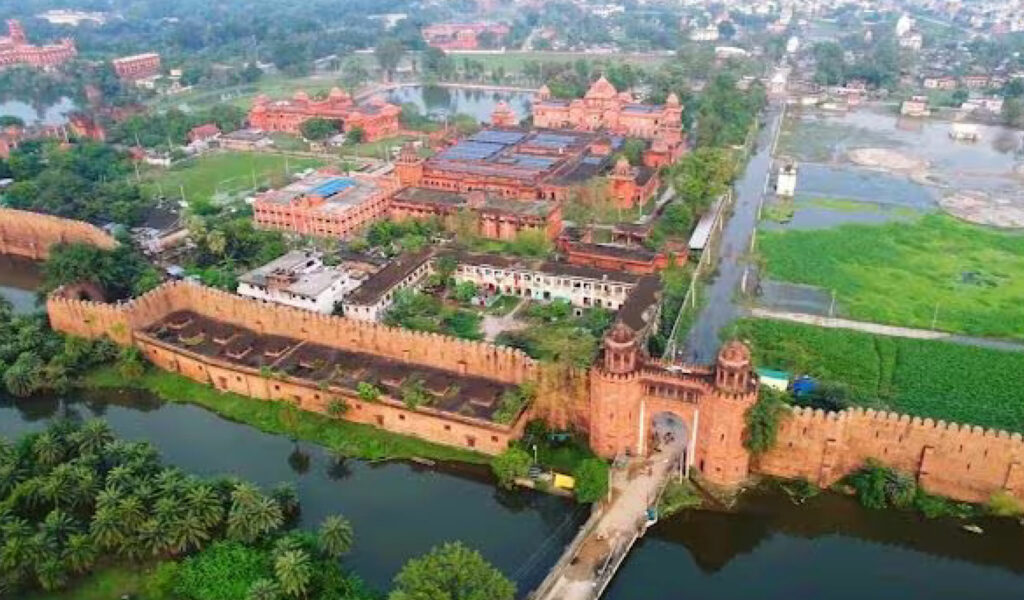
Darbhanga, often called the cultural capital of Bihar, is a city rich in history, music, and traditions. It is one of the most culturally vibrant places to see in Bihar, representing the essence of Mithila.
The most iconic landmark here is the Darbhanga Raj Palace (Nargona Palace), an architectural marvel built by the Darbhanga royal family. The palace complex includes gardens, courtyards, and grand halls reflecting a blend of Mughal and British architecture.
Darbhanga is also famous for its contribution to classical music, especially the Darbhanga Gharana of Dhrupad, one of the oldest forms of Hindustani classical music. Religious sites like the Shyama Mai Temple, Ahilya Asthan, and Kankali Temple attract devotees throughout the year.
The city is a hub of Mithila art, culture, and festivals, especially during Chhath Puja, Holi, and Sama-Chakeva.
👉 Travel Tip: Explore local Mithila handicrafts and attend a cultural performance if visiting during festivals.
Major Places to See in Darbhanga:
•Darbhanga Raj Palace (Nargona Palace)
•Shyama Mai Temple
•Ahilya Asthan
•Kankali Temple
•Chandradhari Museum
16. Lauriya Nandangarh
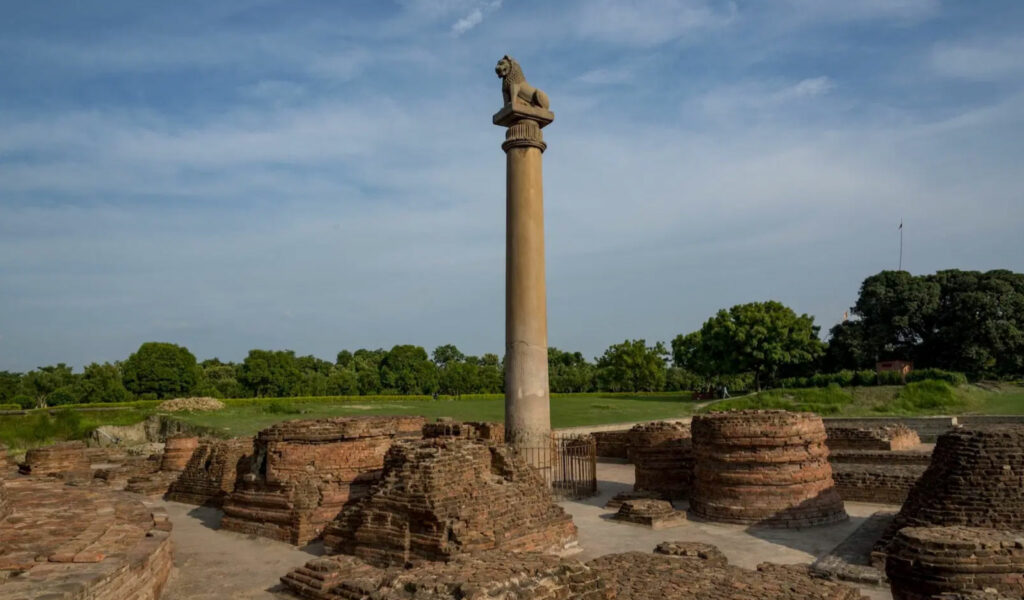
Located in West Champaran district, Lauriya Nandangarh is famous for its well-preserved Ashokan Pillar and a series of ancient Buddhist stupas. The pillar, made of polished sandstone, stands 36 feet high and has inscriptions promoting Ashoka’s message of non-violence and dharma. The nearby mounds, believed to be burial sites of Buddhist monks, make it one of the lesser-known but historically rich places to see in Bihar.
👉 Must-See: Ashokan Pillar, Buddhist Stupas, Archaeological Mounds
17. Buxar
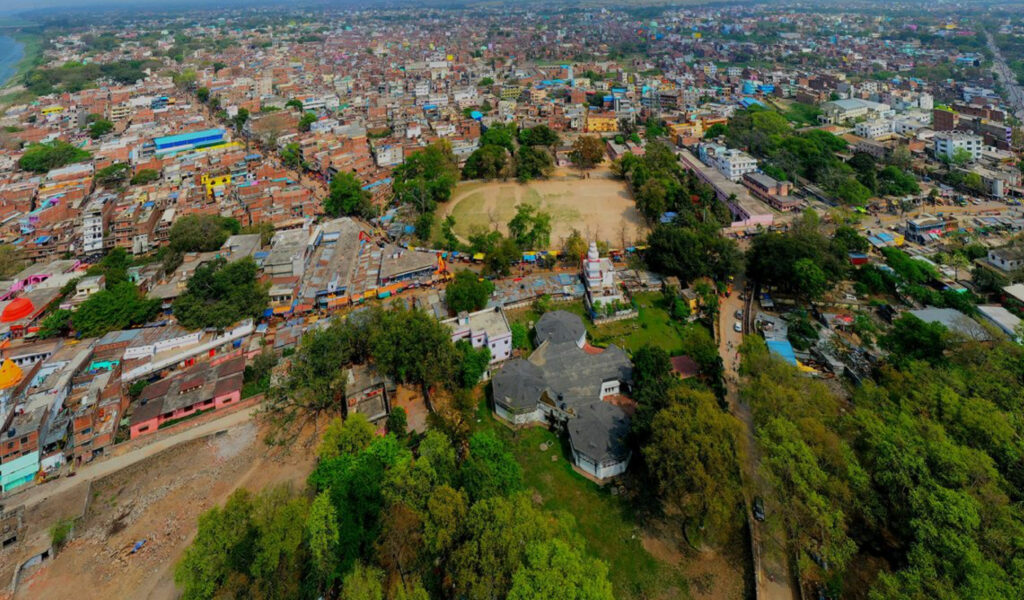
Sitamarhi, located near the Nepal border, is considered the birthplace of Goddess Sita, making it one of the most sacred places to see in Bihar for Hindus. The Janaki Temple, dedicated to Sita, is the main attraction, drawing pilgrims year-round. The region also celebrates Vivah Panchami with grandeur, marking the divine wedding of Lord Rama and Sita.
👉 Must-See: Janaki Temple, Haleshwar Sthan, Pupri Ashram
19. Munger
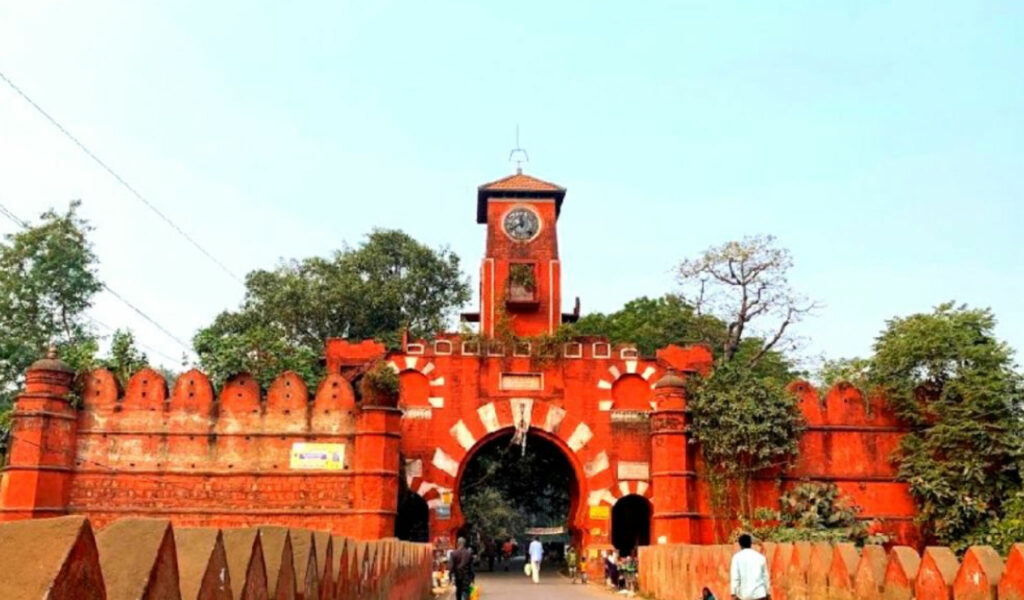
Munger, one of the oldest cities in Bihar, is often called the Yoga Capital of Bihar thanks to the globally renowned Bihar School of Yoga. Founded in 1964, it attracts students from across the world. Munger also boasts historical sites like the Munger Fort, Bhimbandh Wildlife Sanctuary, and several temples. It beautifully blends spirituality, history, and nature.
👉 Must-See: Bihar School of Yoga, Munger Fort, Bhimbandh Sanctuary
20. Champanagar (Bhagalpur)
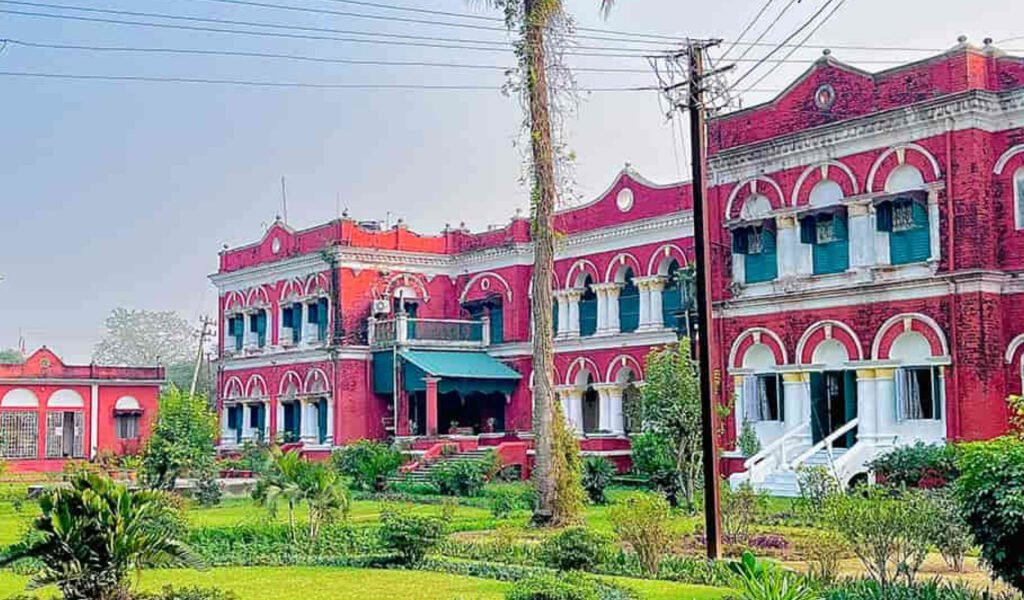
Champanagar, located near Bhagalpur, is an important Jain pilgrimage site. It is believed that Lord Vasupujya, the 12th Tirthankara of Jainism, attained Kevalgyan (omniscience) here. The site is dotted with ancient Jain temples, shrines, and meditation spots. Though less commercialized, it remains one of the spiritually enriching places to see in Bihar.
👉 Must-See: Jain Temples, Vasupujya Ji Tirth, Local Monasteries
Travel Tips for Visiting Bihar
•Best Time: November to March (cool and pleasant weather)
•Local Food to Try: Litti-Chokha, Sattu Paratha, Khaja, Thekua
•Transport: Patna, Gaya, and Darbhanga are well-connected airports. Trains cover almost all towns.
•Safety Tip: Travel with local guides for forts & ruins.
FAQs About Places to See in Bihar
Q. What is Bihar most famous for?
Bihar is known as the birthplace of Buddhism and Jainism, Nalanda University, and sacred pilgrimage sites like Bodh Gaya and Vaishali.
Q. Which are the top 5 places to see in Bihar?
Bodh Gaya, Nalanda, Patna, Rajgir, and Vaishali.
Q. Is Bihar worth visiting for tourists?
Absolutely! Bihar offers a mix of heritage, spirituality, art, and unique experiences you won’t find elsewhere in India.
Conclusion
From Buddhist monasteries and Jain temples to mighty forts and artistic villages, Bihar is a land of stories that date back thousands of years. Whether you’re a pilgrim, a historian, or simply a curious traveler, the places to see in Bihar promise an unforgettable journey into India’s timeless heritage.

